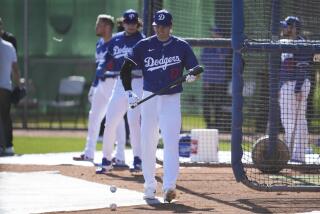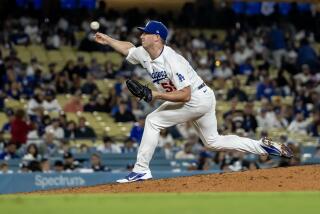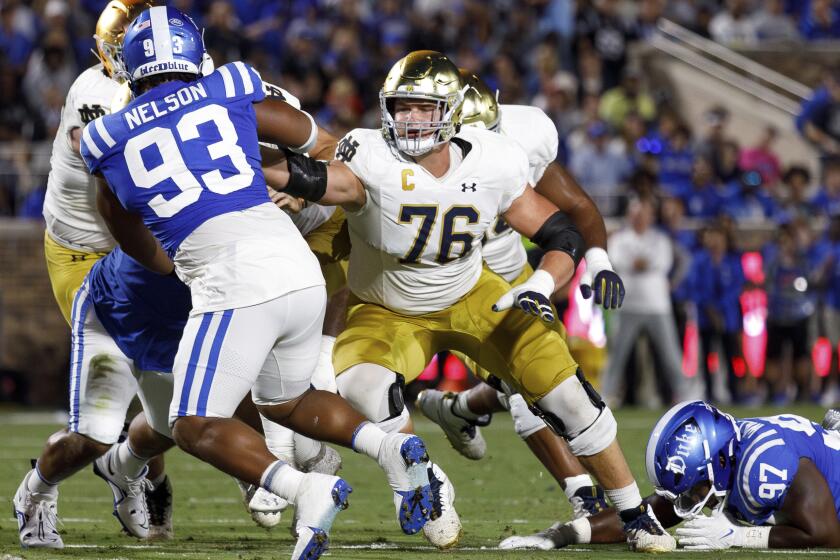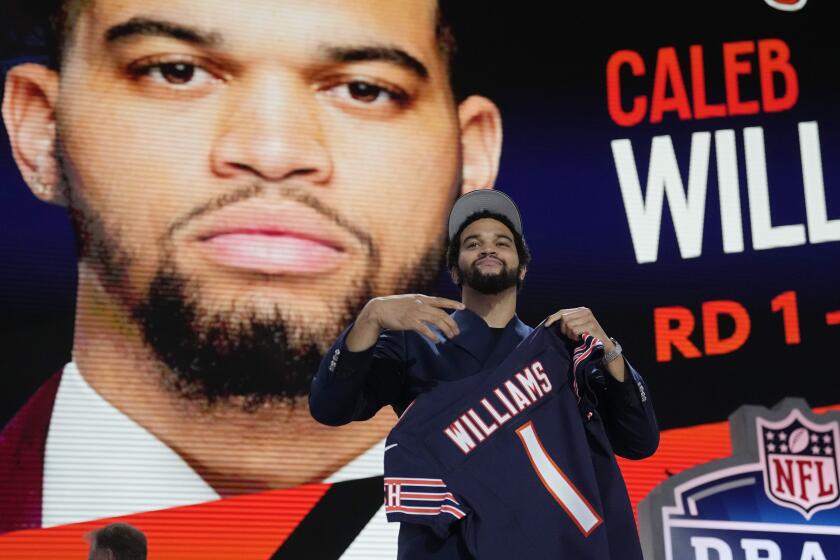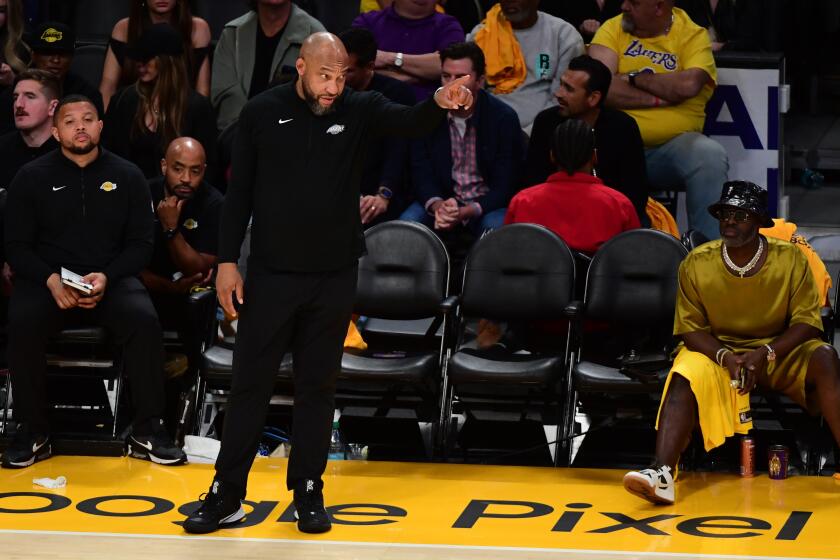Sabermetrics goes on hiatus in the postseason
Dodgers catcher A.J. Ellis will be offering his analysis throughout the World Series. Ellis, 32, recently completed his second full season as a starter for the Dodgers by batting .333 in a National League division series against the Atlanta Braves and .316 in the NL Championship Series against the St. Louis Cardinals. Ellis is familiar with the Boston Red Sox, a team the Dodgers faced during the regular season.
Over the last decade, baseball has experienced a departure from the traditional statistics and measurements that compared and contrasted players for more than a century. People my age and older who grew up with baseball cards have seen stats like AVG, RBI, HR and ERA replaced with new, en vogue acronyms like OBP, OPS, WAR and WHIP.
These new evaluations, known as sabermetrics, are commonly used by major league front offices to help determine the current and future production a player has.
Although not as pronounced as in the Hollywood movie adaptation “Moneyball,” there is still a small tug of war between those who still believe in the “eyeball test” for scouting players and those who believe baseball organizations can be managed from a laptop or iPad. Fortunately, most people deeply invested in the game — myself included — believe in a marriage between what can’t be measured on the field, and especially in the clubhouse, and the numbers the computer cranks out.
John Farrell has made a decision to forgo the current analytics of probability and matchups and trust in baseball instincts. For the majority of the regular season, the Red Sox manager fielded a lineup platooning the right-handed hitting Jonny Gomes versus left-handed pitching and the switch-hitting Daniel Nava versus right-handers.
The partnership produced a solid combination that produced for the club. Against lefties, Gomes hit .236 and eight of his thirteen home runs while Nava simply destroyed right-handers hitting .322 and 10 of his 12 home runs. However, this postseason, Farrell has all but ended the platoon and Gomes is getting the starts. Not only is Gomes an 11-year veteran (compared with three for Nava), he is universally beloved and praised throughout the game by his peers for his energy and ability to shepherd young teammates and bring teams together.
These immeasurable factors of chemistry are loathed by sabermetricians, who tend to scoff at these claims. Undeniable even by the most stubborn supporter of these new metrics is that in the postseason, the Red Sox are 1-3 when Nava starts games and 7-0 when Gomes does, heading into Game 2. To players, managers and fans, that is the only stat that matters in October.
Player(s) of the game
After waiting 16 years to play in a World Series, Carlos Beltran was forced to leave Game 1 with bruised ribs. X-rays may have come back negative, but the pain he must have felt swinging the bat is a demonstration of what guys will play through this time of the year. His two-out RBI single to add an insurance run provided important breathing room. Carlos Martinez got six huge outs, bridging the game between Michael Wacha and Trevor Rosenthal. The development of his slider from midseason to what the Dodgers saw in the National League Championship Series and the Red Sox saw in Game 2 has taken him to another level.
Turning point(s)
Pete Kozma entered the game in the top of the seventh as a pinch-runner and immediately began making up for his Game 1 miscues. On a 2-2 count, he timed and stole third with Jon Jay stealing second behind him. The next pitch was ball four, which loaded the bases for Matt Carpenter’s sacrifice fly. On the Carpenter sacrifice fly, Red Sox catcher Jarrod Saltalamacchia made the decision to hold his ground and attempt a swipe tag at the ball thrown from the outfield. It was a risky gamble on an off-target throw. The ball got past him and Craig Breslow’s errant throw to third provided the go-ahead run.
Extra bases
Until the Cardinals’ rally in the seventh, the night was again setting up as a classic David Ortiz World Series game. He looked totally locked in and had great swings his entire third at-bat. On one of the few mistakes Wacha made, Ortiz hammered a 3-2 changeup over the Green Monster, giving the Red Sox the lead and his second homer of the series.
I felt old watching the three Cardinals pitchers ages 22, 22, and 23 allow only four Red Sox hits and strike out a combined 12 hitters. When I was 22, I was at Class A digging in my couch cushions for Taco Bell money and trying to learn how to hit with a wooden bat. Another way to put it so it hits closer to home for our fans, none of the three pitchers were alive the last time the Dodgers won a World Series. The young power arms were on full display, culminated by Trevor Rosenthal striking out the side to earn the save.
Game 3 preview
St. Louis accomplished every road team’s goal and split the first two games of the series. They returned to their formula of solid pitching and quality at-bats to even things up. They are sure to be feeling confident heading back home.
In Game 3, power righty Joe Kelly matches up with the ultra-competitive Jake Peavy. Kelly should feel comfortable pitching in what is sure to be a great environment in St. Louis. His ability to command his off-speed will be pivotal in keeping the Red Sox from timing his high velocity. Peavy would be well served to look closely at Zack Greinke’s patterns and sequences during his two dominant NLCS performances versus the Cardinals. Both pitchers rely on using the edges of the plate and throwing any pitch at any time
More to Read
Get our high school sports newsletter
Prep Rally is devoted to the SoCal high school sports experience, bringing you scores, stories and a behind-the-scenes look at what makes prep sports so popular.
You may occasionally receive promotional content from the Los Angeles Times.
